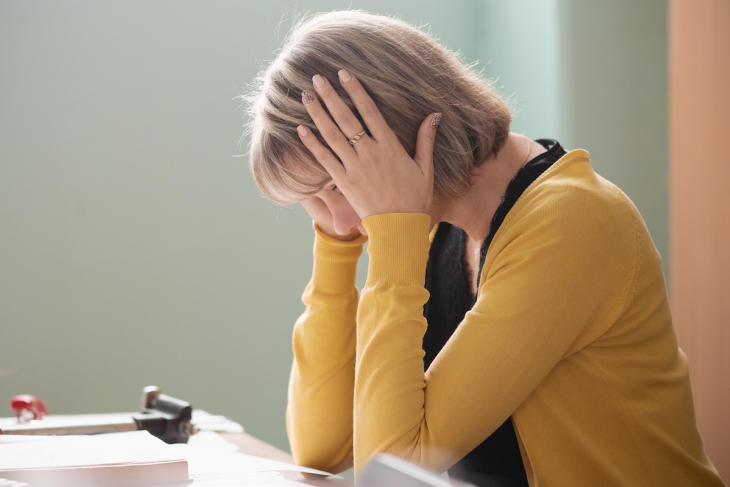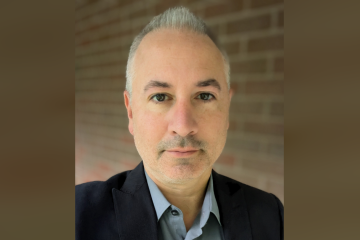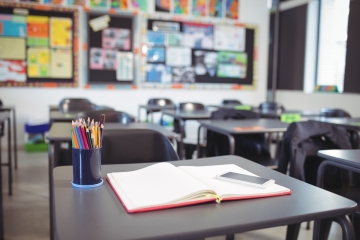Editor’s note: This was first published by EdChoice.
The end of the school year is rapidly approaching, and teachers are more pessimistic than ever about the state of education in the United States. This downward slide of teacher morale may be a canary in the coal mine—and, at the very least, points us towards important classroom issues that have presented serious challenges for teachers over the course of the school year.
To better understand the current perspectives and opinions of teachers, EdChoice, in partnership with Morning Consult, surveyed a nationally representative sample of K–12 educators (N = 1,031) from March 28–April 3, 2024.
In this wave of our teacher survey, we asked teachers to share their opinions on a range of topics including attitudes toward the teaching profession; daily experiences in the classroom; student use of cell phones and social media; and school choice. Additionally, we asked new questions to find out how teachers are being impacted by recent state and local regulations on curriculum content.
Read the full report, and here are some of our major findings :
Teacher morale has hit a record low
Teacher optimism about the overall direction of K–12 education has hit the lowest point in four years of our polling, sharply plummeting since May of 2023. Only 19 percent of teachers think education is going in the right direction nationally, and 39 percent of teachers feel positively about the state of education in their own local school district.
This corresponds with a general drop in public mood towards education. Our February poll of American adults indicated a four-year low 22 percent of Americans feel positively about the direction of education across the country. This time last year, 35 percent and 53 percent of teachers felt positively about K–12 education at the national and local levels, respectively. Teacher outlooks have turned more grim during the course of this school year. Back in the fall, a less overwhelming 53 percent of teachers expected the state of K–12 education to get worse in the future according to an October survey of K–12 American public school teachers by the Pew Research Center.
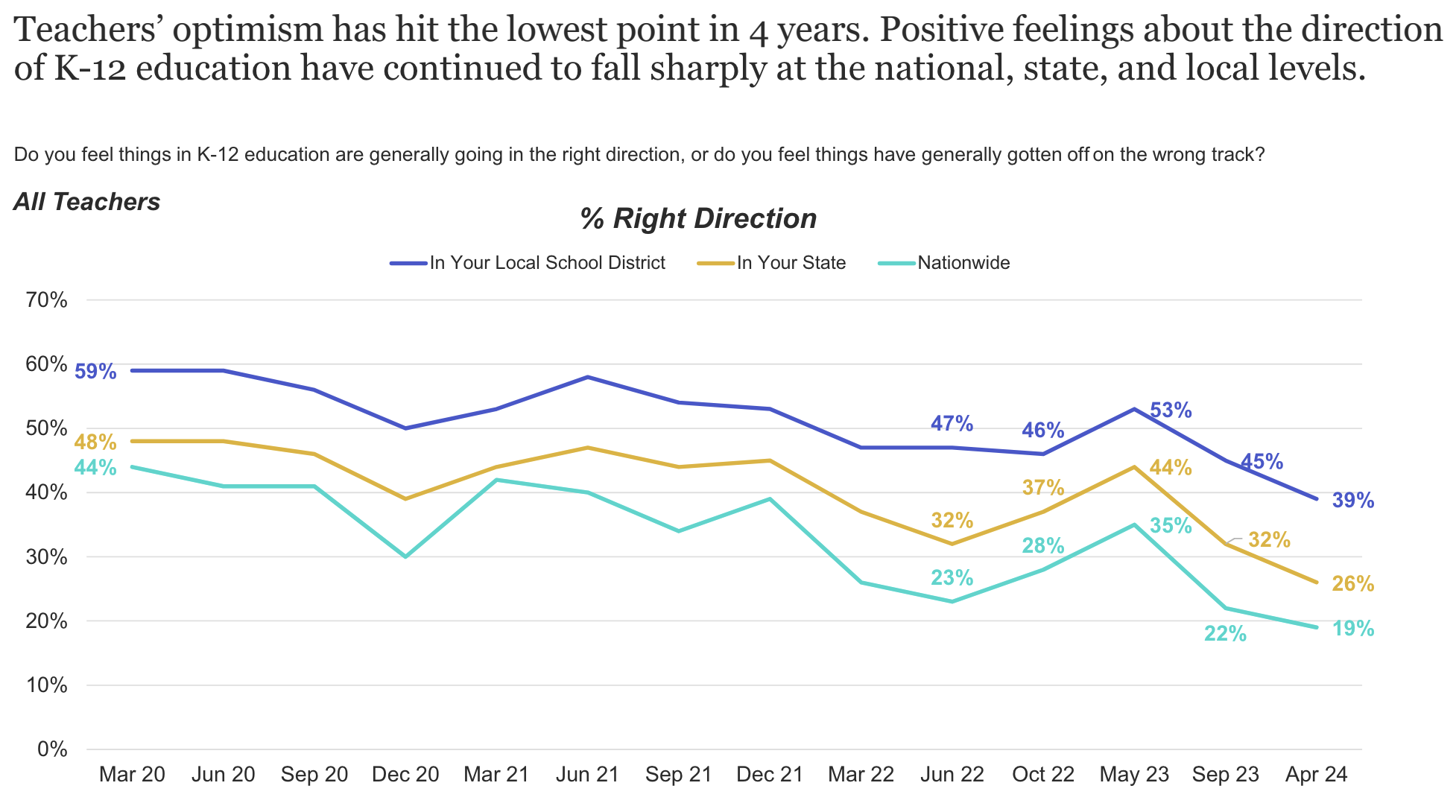
(All images of figures and their corresponding text come from the full report.)
Unsurprisingly, these feelings correspond with how teachers view their jobs and how likely they are to recommend the teaching profession to others. This spring, only 15 percent of teachers say that they would recommend teaching to a friend or family member—once again marking the lowest point we have recorded in four years of our teacher surveys. In our polling last spring, 36 percent of teachers were likely to recommend the teaching profession. This parallels the sharp drop in teachers’ feelings about education as a whole.
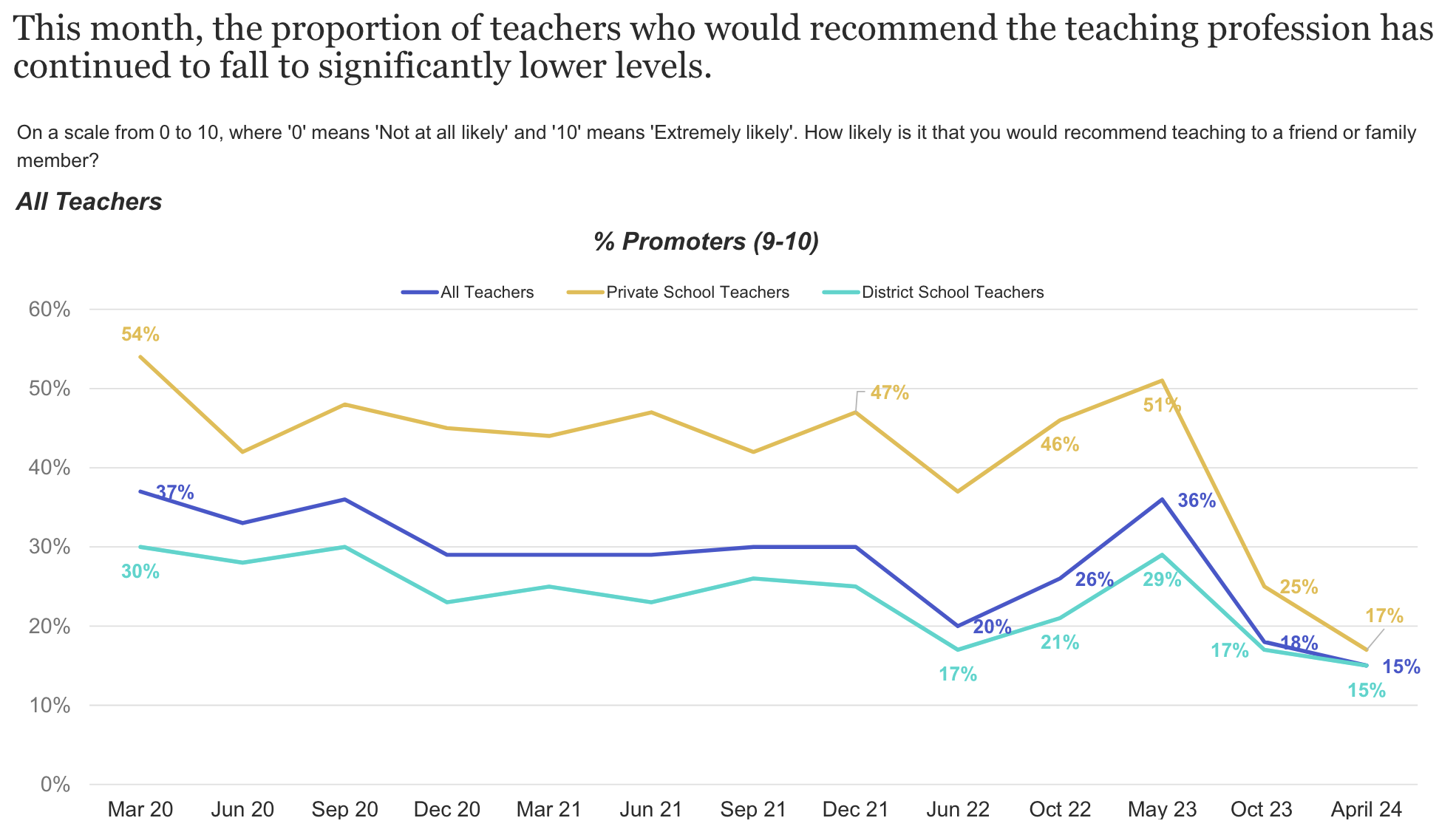
This morale crisis may reflect the challenge teachers face in keeping their students on track. Teacher views of student progress are similarly gloomy. Twenty percent of teachers report that their students are progressing very well academically, with only 17 percent and 14 percent saying the same about social and emotional development respectively. Across these metrics, teacher confidence has fallen by approximately 10 percentage points since last spring. When asked about the current school year, three-fourths (74 percent) of teachers say they are doing a substantial amount of catch-up work to bring students up to speed academically. In short, the vast majority of teachers believe that their students are falling behind in the classroom.
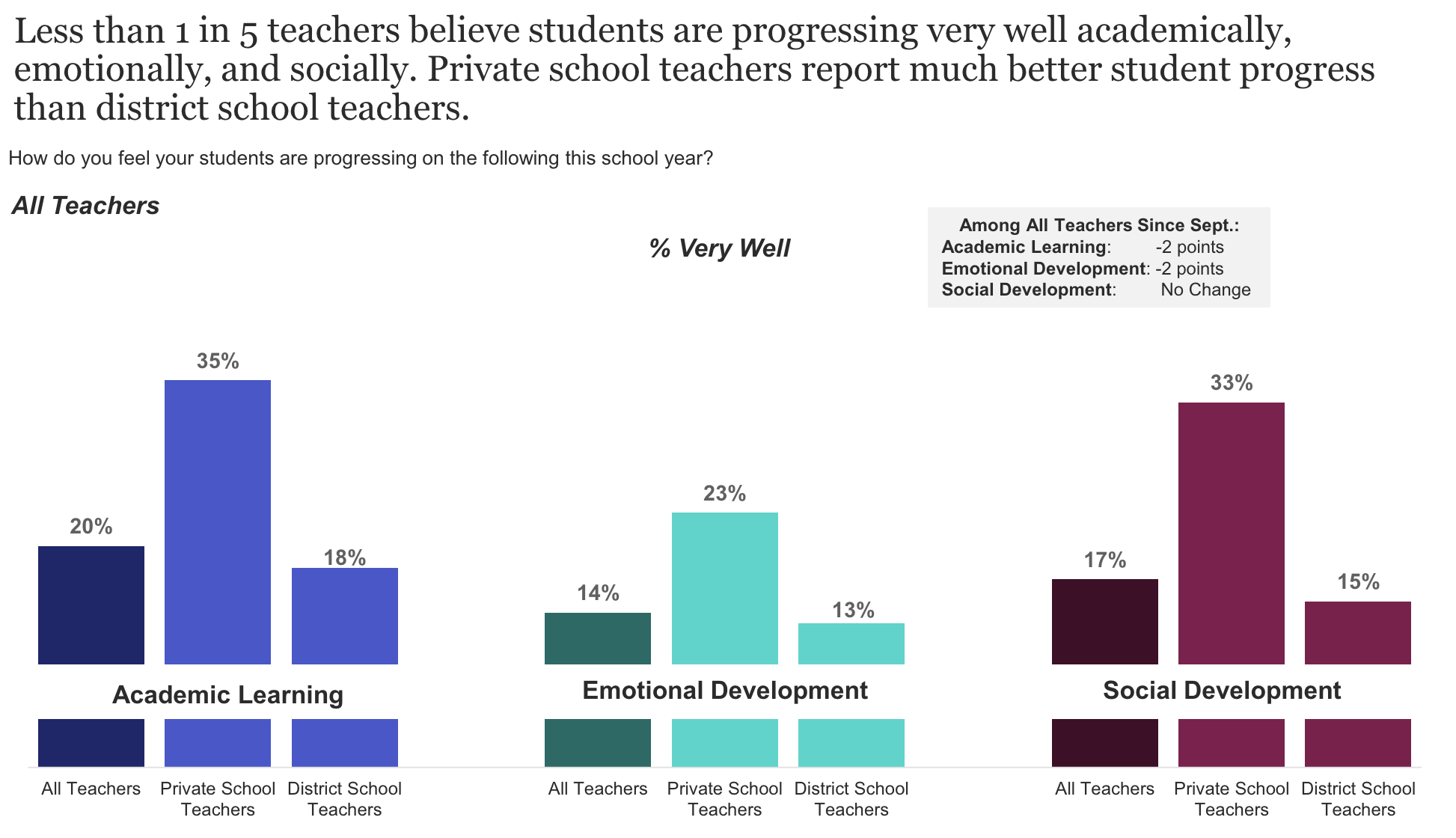
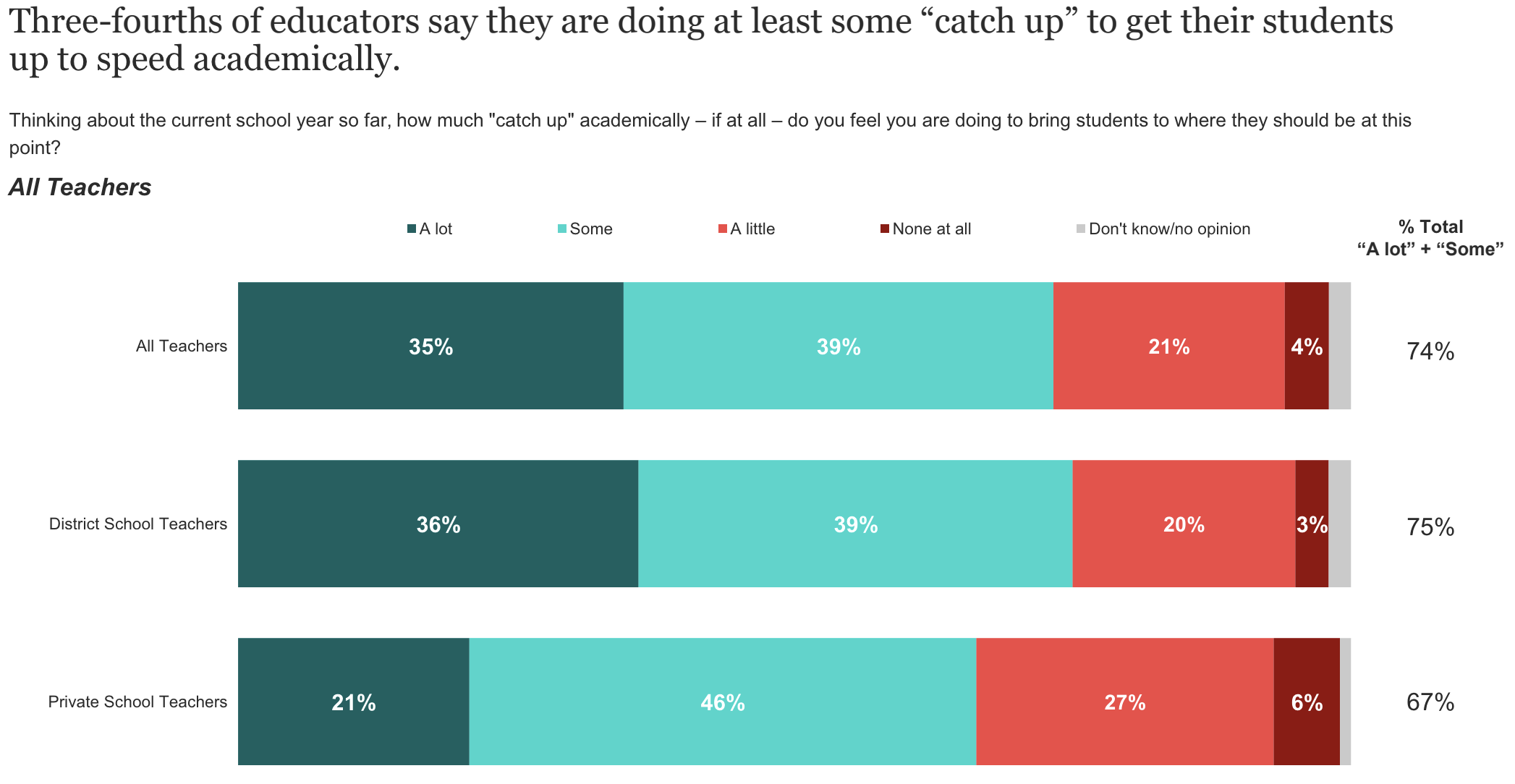
Inside the classroom in 2024
To understand the context of this rampant pessimism, we need to take a closer look at what’s going on inside the classroom day to day from the perspective of teachers.
Curriculum laws have become an elephant in the classroom for teachers. Forty percent of teachers say they’ve modified their curriculum or classroom discussions because of state laws, and 35 percent of teachers said the same about district policies. About a third (30 percent) of teachers say that new regulations have limited the books/educational content they can use in class. Teachers are also making adjustments to classroom content of their own accord. Nearly half (49 percent) of teachers limited classroom discussions about political and social issues in class over the past year. Curriculum restrictions, both mandatory and self-imposed, appear to have taken root in today’s classrooms.
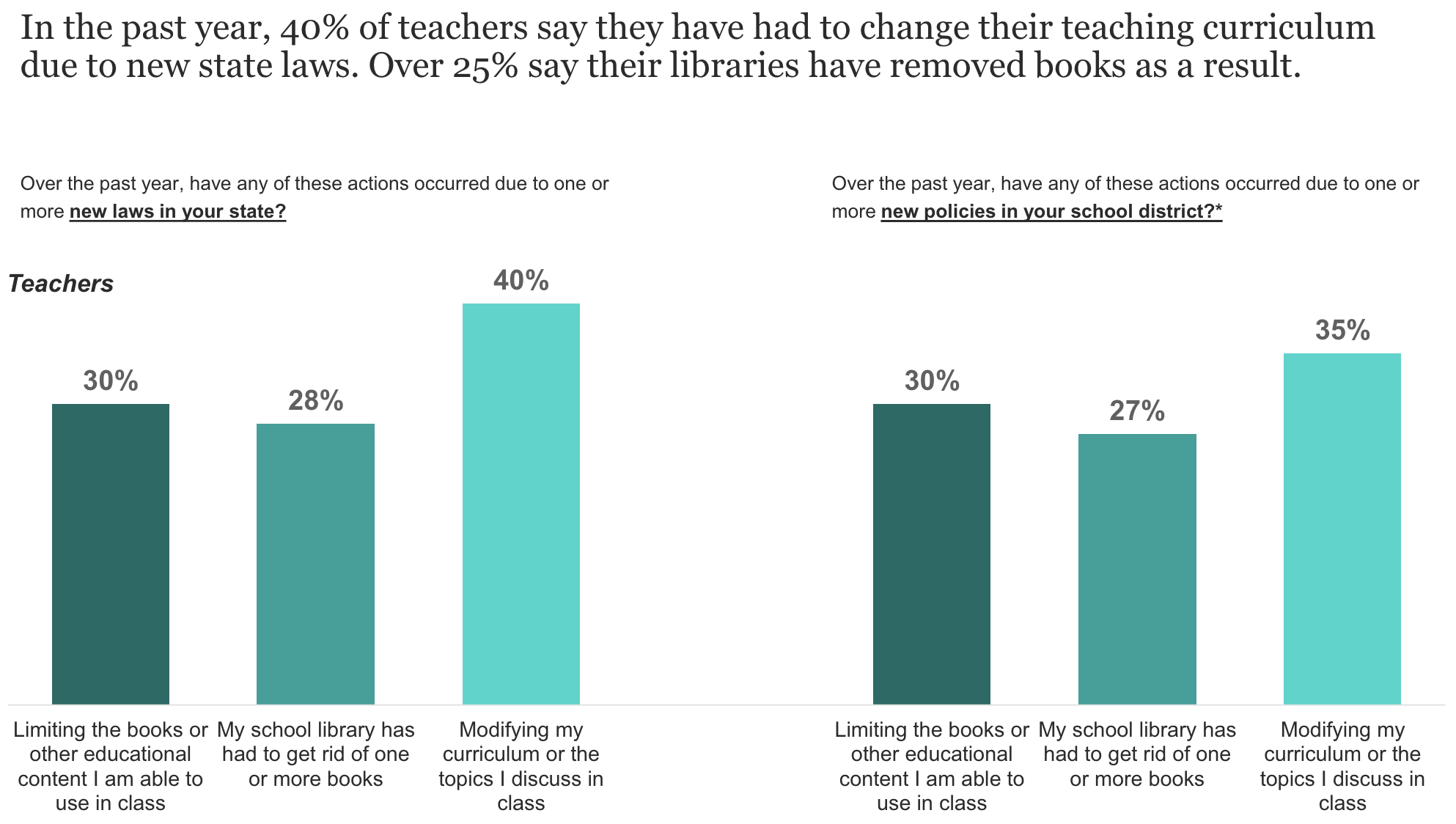

Teachers are also grappling with absenteeism and student behavior, and they report that matters are only getting worse. When asked about student absences compared to this time last year, 40 percent of teachers say absences are more frequent now—12 points higher than in the fall.
Nearly half (47 percent) of teachers say that student misbehaviors are more frequent now than this time last year, up 8 points from last fall. In comparison, private school teachers have a rosier point of view, with only 27 percent saying they feel student misbehaviors have increased since last year, an improvement from last September (36 percent).
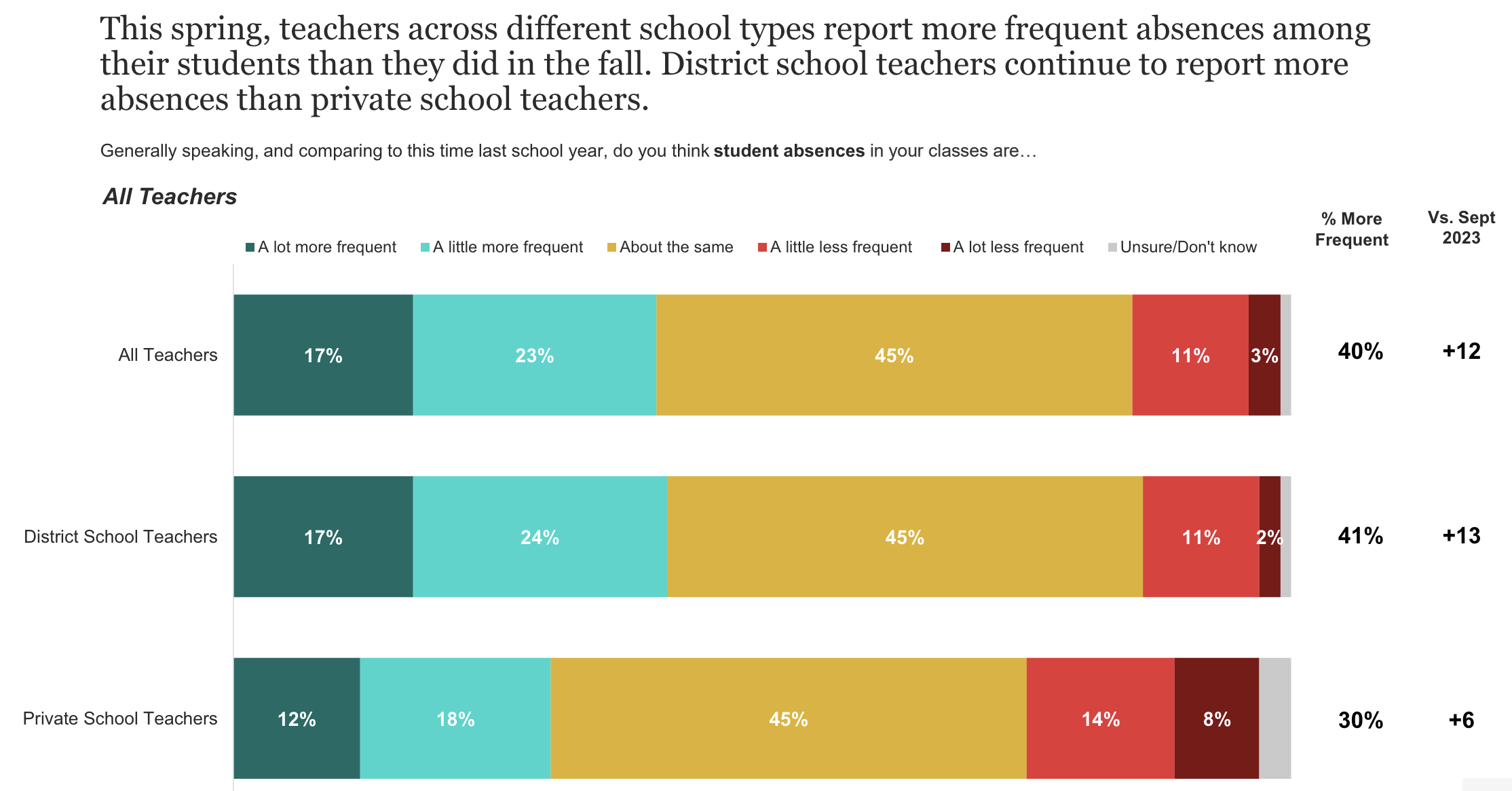

Finally, we asked teachers about the daily classroom environment, revealing key differences in the perspectives of teachers and their students according to our recent survey of American teenagers. Compared to teens, teachers tend to underestimate how many of their students are bored (19 percent versus 70 percent) and use their phones in class (25 percent versus 55 percent). Teachers also overestimate how many of their students want to be in school (48 percent versus 19 percent). Whether teen students are overly pessimistic about their fellow students or teachers have a sunnier outlook than perhaps is warranted, there is a clear disconnect between how teachers and students view the classroom.
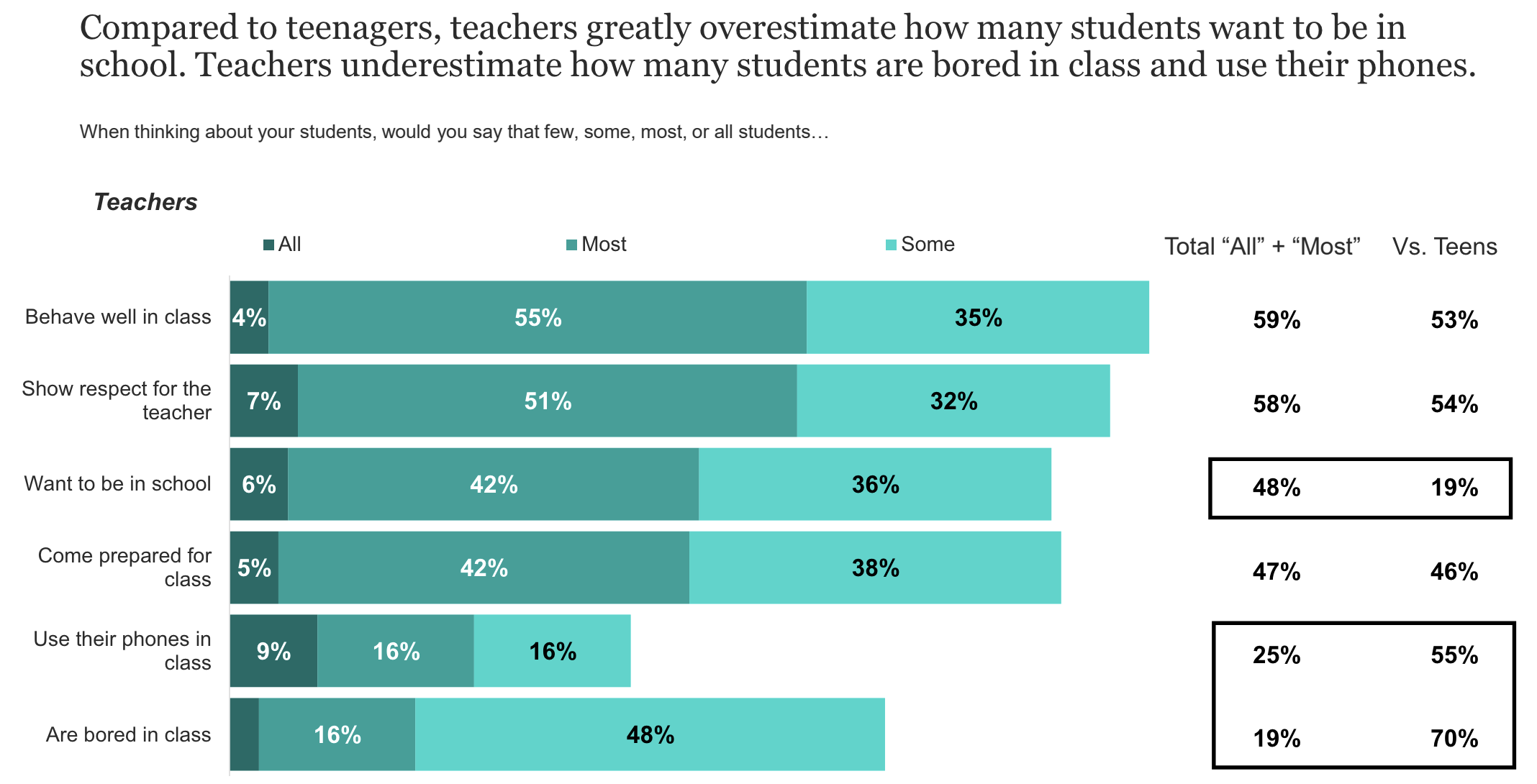
Silver linings
While news from the classroom seems discouraging, teachers remain positive. Two-thirds of teachers feel a sense of purpose (69 percent) and hopeful (64 percent) when thinking about the future, and the majority of teachers are happy (56 percent). It is encouraging news that most teachers feel happy in their personal lives, despite their concerns about the current direction of education.
Teachers are also open to new ways of approaching education. Sixty-two percent of all teachers express interest in tutoring students outside of school hours. Hybrid schooling also appeals to teachers. Half of teachers (50 percent) would prefer to teach outside of the traditional in-person classroom for at least part of the week. Furthermore, about 70 percent of teachers support education savings accounts (ESAs), a type of school choice policy that gives families greater flexibility in their educational spending. From this positive reception, perhaps we can take away that teachers are optimistic about finding ways to reimagine what education can look like.
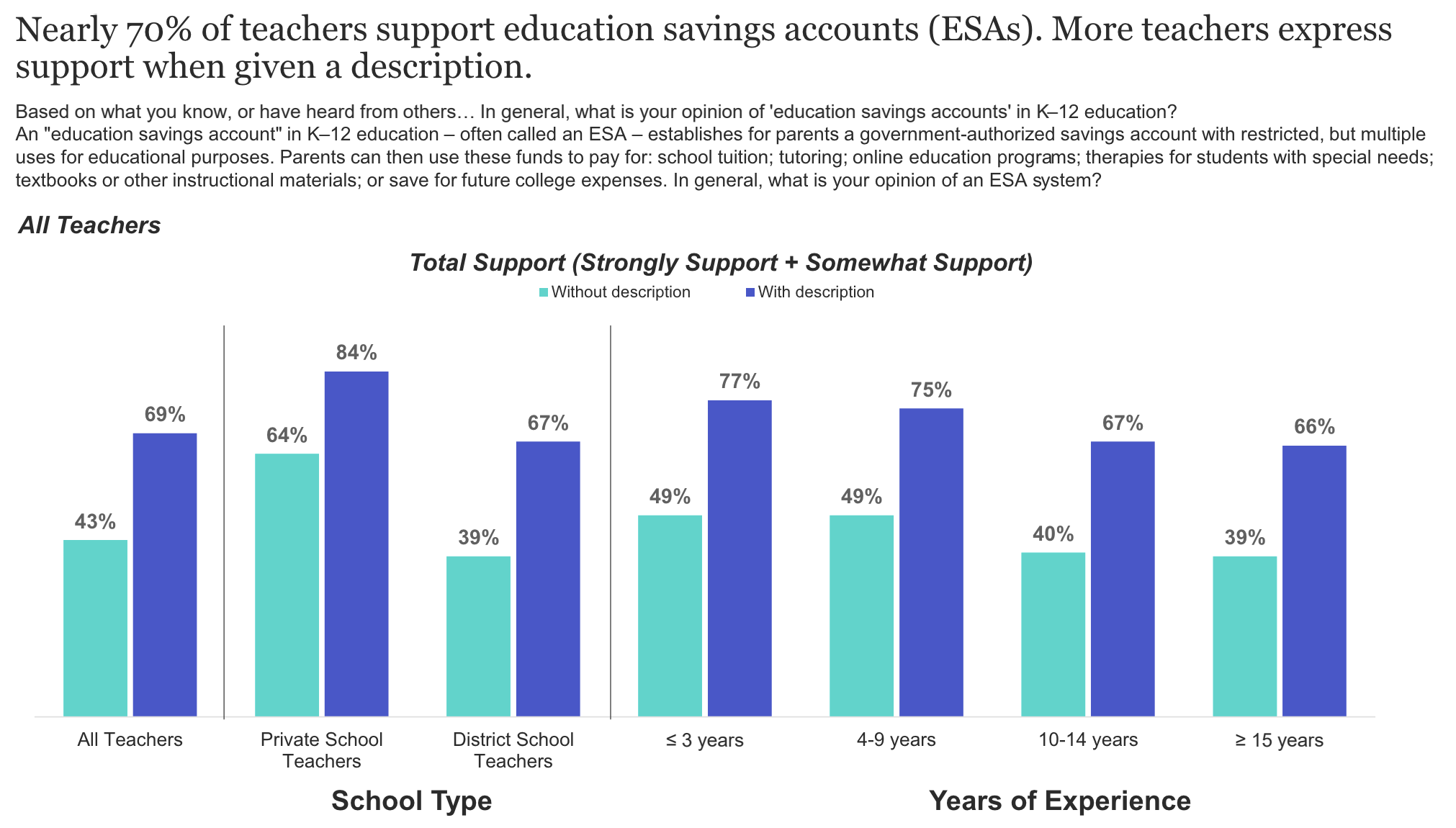
With these challenging classroom conditions in mind, it is no wonder that teachers are feeling concern about their students’ progress and the direction of education. Nonetheless, teachers remain open towards new approaches to schooling. These valuable perspectives can point us towards what to look out for as we move into next school year. To explore more of what teachers had to say this spring, read the full report.
